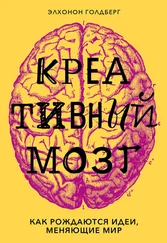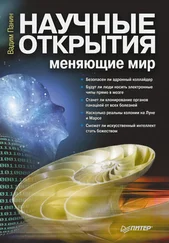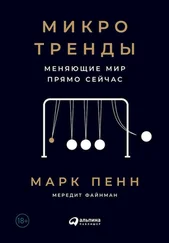11. V. Klucharev, K. Hytönen, M. Rijpkema, A. Smidts, and G. Fernández, «Reinforcement Learning Signal Predicts Social Conformity», Neuron 61 (2009): 140–151.
12. V. Klucharev, M. A. M. Moniek, A. Smidts, and G. Fernandez, «Downregulation of the Posterior Medial Frontal Cortex Prevents Social Conformity», Journal of Neuroscience 31 (2011): 11934—11940.
13. E. Goldberg, D. Roediger, N. E. Kucukboyaci, C. Carlson, O. Devinsky, R. Kuzniecky, E. Halgren, and T. Thesen, «Hemispheric Asymmetries of Cortical Volume in the Human Brain», Cortex 49 (2013): 200–210.
14. C. Fajardo, M. I. Escobar, E. Buriticá, G. Arteaga, J. Umbarila, M. F. Casanova, and H. Pimienta, «Von Economo Neurons Are Present in the Dorsolateral (Dysgranular) Prefrontal Cortex of Humans», Neuroscience Letters 435 (2008): 215–218.
15. J. M. Allman, N. A. Tetreault, A. Y. Hakeem, K. F. Manaye, K. Semendeferi, J. M. Erwin, S. Park, V. Goubert, and P. R. Hof, «The Von Economo Neurons in the Frontoinsular and Anterior Cingulate Cortex», Annals of the New York Academy of Sciences 1225 (2011): 59–71.
16. A. F. Santillo, C. Nilsson, and E. Englund, «Von Economo Neurones Are Selectively Targeted in Frontotemporal Dementia», Neuropathology and Applied Neurobiology 39 (2013): 572–579.
17. G. Boole, An Investigation of the Laws of Thought (Amherst, MA: Prometheus Books, 2003).
18. J. M. Osborne and A. Rubinstein, A Course in Game Theory (Cambridge, MA: MIT Press, 1994). At the time of this writing, the «2/ 3 of the average» game’s website was http:// twothirdsofaverage.creativitygames.net/.
19. J. P. Guilford, The Nature of Human Intelligence (New York: McGraw-Hill, 1967); E. Jauk, M. Benedek, B. Dunst, and A. C. Neubauer, «The Relationship Between Intelligence and Creativity: New Support for the Threshold Hypothesis by Means of Empirical Breakpoint Detection», Intelligence 41 (2013): 212–221.
20. J. C. Kaufman, Creativity 101 (New York: Springer Publishing Company, 2009).
21. J. B. Carroll, Human Cognitive Abilities: A Survey of Factor Analytic Studies (Cambridge, UK: Cambridge University Press, 1993).
22. E. Goldberg, The New Executive Brain: Frontal Lobes in a Complex World (New York: Oxford University Press, 2009).
23. A. S. Kaufman, IQ Testing 101 (New York: Springer Publishing, 2009).; см. также: http:// www.pearsonclinical.com/ psychology/ products/ 100000392/ wechsleradult-intelligence-scalefourth-edition-wais-iv.html accessed April 24, 2017.
24. R. K. Sawyer, Explaining Creativity: The Science of Human Innovation (New York: Oxford University Press, 2012); M. Csikszentmihalyi, Creativity: Flow and the Psychology of Discovery and Invention (New York: Harper Collins, 1996).
25. T. Hey, Einstein’s Mirror (Cambridge, UK: Cambridge University Press, 1997): 1.
26. K. Landau-Drobantseva, Academician Landau: How We Lived. A Memoir, in Russian (Moscow: Zakharov Press, 1999).
27. R. K. Sawyer, Explaining Creativity: The Science of Human Innovation, 2nd edn. (New York: Oxford University Press, 2012); K. H. Kim, «Meta-analyses of the Relationship of Creative Achievement to Both IQ and Divergent Thinking Tests Scores», Journal of Creative Behavior 42 (2008): 106–130.
28. E. P. Torrance, Torrance Tests of Creative Thinking (Bensenville, IL: Scholastic Testing Service, 1966).
29. D. A. Gansler, D. W. Moore, T. M. Susmaras, M. W. Jerram, J. Sousa, and K. M. Heilman, «Cortical Morphology of Visual Creativity», Neuropsychologia 49 (2011): 2527–2532.
30. R. E. Jung, J. M. Segall, J. H. Bockholt, R. A. Flores, S. W. Smith, R. S. Chavez, and R. J. Haier, «Neuroanatomy of Creativity», Human Brain Mapping 31 (2010): 398–409.
31. H. Takeuchi, Y. Taki, Y. Sassa, H. Hashizume, A. Sekiguchi, A. Fukushima, and R. Kawshima, «Regional Gray Matter Volume of Dopaminergic System Associate with Creativity: Evidence from Voxel-based Morphometry», Neuroimage 51 (2010): 578–585; H. Takeuchi, Y. Taki, Y. Sassa, H. Hashizume, A. Sekiguchi, A. Fukushima, and R. Kawishima, «White Matter Structures Associated with Creativity: Evidence from Diffusion Tensor Imaging», Neuroimage 51 (2010): 11–18.
32. S. Sandkühler and J. Bhattacharya, «Deconstructing Insight: EEG Correlates of Insightful Problem Solving», PLoS One 3 (2008): E1459.
33. A. Fink, R. H. Grabner, M. Benedek, G. Reishofer, V. Hauswirth, M. Fally, C. Neuper, F. Ebner, and A. C. Neubauer, «The Creative Brain: Investigation of Brain Activity During Creative Problem Solving by Means of EEG and FMRI», Human Brain Mapping 30 (2009): 734–748.
34. I. Carlsson, P. E. Wendt, and J. Risberg, «On the Neurobiology of Creativity: Differences in Frontal Activity Between High and Low Creative Subjects», Neuropsychologia 38 (2000): 873–875.
35. A. Fink and M. Benedek, «EEG Alpha Power and Creative Ideation», Neuroscience and Biobehavioral Reviews 44 (2014): 111–123.
36. C. Lustenberger, M. R. Boyle, A. A. Foulser, J. M. Mellin, and F. Fröhlich, «Functional Role of Frontal Alpha Oscillations in Creativity», Cortex 67 (2015): 74–82.
37. A. E. Green, K. A. Spiegel, E. J. Giangrande, A. B. Weinberger, N. M. Gallagher, and P. E. Turkeltaub, «Thinking Cap Plus Thinking Zap: TDCS of Frontopolar Cortex Improves Creative Analogical Reasoning and Facilitates Conscious Augmentation of State Creativity in Verb Generation», Cerebral Cortex (2016): Bhw080.
38. C. Lombroso, The Man of Genius, reprint of translated edition of the original 1889 book (North Charleston, SC: CreateSpace Independent Publishing Platform, 2015).
39. S. H. Carson, «Creativity and Psychopathology: A Shared Vulnerability Model», Canadian Journal of Psychiatry 56 2011: 144–153; A. Fink, M. Benedek, H. F. Unterrainer, I. Papousek, and E. M. Weiss, «Creativity and Psychopathology: Are There Similar Mental Processes Involved in Creativity and in Psychosisproneness?» Frontiers in Psychology 5 (2014).
40. Более подробный обзор можно найти в моей предыдущей книге: E. Goldberg, The Wisdom Paradox: How Your Mind Can Grow Stronger As Your Brain Grows Older (New York: Gotham, 2005).
41. S. H. Carson, J. B. Peterson, and D. M. Higgins, «Reliability, Validity, and Factor Structure of the Creative Achievement Questionnaire», Creative Research Journal 17 (2005): 37–50; H. G. Gough, «A Creative Personality Scale for the Adjective Check List», Journal of Personality and Social Psychology 37 (1979): 1398–1405.
42. N. Andreasen, «Creativity and Mental Illness: Prevalence Rates in Writers and Their First-degree Relatives», American Journal of Psychiatry 144 (1987): 1288–1292.
43. S. Kyaga, P. Lichtenstein, M. Boman, C. Hultman, N. Långström, and M. Landén, «Creativity and Mental Disorder: Family Study of 300,000 People with Severe Mental Disorder», British Journal of Psychiatry 199 (2011): 373–379; K. R. Jamison, «Mood Disorders and Patterns of Creativity in British Writers and Artists», Psychiatry 52 (1989): 125–134.
44. V. E. Golimbet, M. G. Aksenova, V. V. Nosikov, V. A. Orlova, and V. G. Kaleda, «Analysis of the Linkage of the Taq1A and Taq1B Loci of the Dopamine D2 Receptor Gene with Schizophrenia in Patients and Their Siblings», Neuroscience and Behavioral Physiology 33 (2003): 223–225.
45. S. Keri, «Genes for Psychosis and Creativity. A Promoter Polymorphism of the Neuregulin 1 Gene Is Related to Creativity in People with High Intellectual Achievement», Psychological Science 20 (2009): 1070–1073; J. Hall, H. C. Whalley, D. E. Job, B. J. Baig, A. M. McIntosh, K. L. Evans, P. A. Thomson, D. J. Porteous, D. G. Cunningham-Owens, E. C. Johnstone, and S. M. Lawrie, «A Neuregulin 1 Variant Associated with Abnormal Cortical Function and Psychotic Symptoms», Nature Neuroscience 9 (2006): 1477–1478; A. M. McIntosh, T. W. Moorhead, D. Job, G. K. Lymer, S. Muñoz Maniega, J. McKirdy, J. E. Sussmann, B. J. Baig, M. E. Bastin, D. Porteous, K. L. Evans, E. C. Johnstone, S. M. Lawrie, and J. Hall, «The Effects of a Neuregulin 1 Variant on White Matter Density and Integrity», Molecular Psychiatry 13 (2008): 1054–1059; B. Barbot, M. Tan, and E. L. Grigorenko, «The Genetics of Creativity: The Generative and Receptive Sides of the Creativity Equation», in Neuroscience of Creativity, Eds. O Vartanian, A. S. Ristol, and J. C. Kaufman (Cambridge, MA: MIT Press, 2013): 72–93.
Читать дальше
![Элхонон Голдберг Креативный мозг [Как рождаются идеи, меняющие мир] [litres] обложка книги](/books/395572/elhonon-goldberg-kreativnyj-mozg-kak-rozhdayutsya-id-cover.webp)
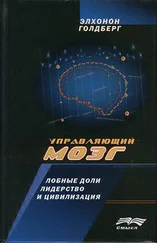
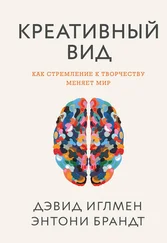


![Наталья Царенко - Джентльменами не рождаются, или Секреты воспитания мальчиков [litres]](/books/396504/natalya-carenko-dzhentlmenami-ne-rozhdayutsya-ili-se-thumb.webp)


